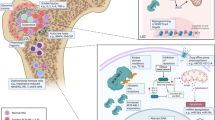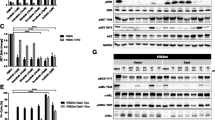Abstract
Purpose of Review
The clinical scenario for chronic myeloid leukemia patients rapidly changed after the introduction of tyrosine kinase inhibitors (TKIs). Second-generation TKIs as frontline treatment increased the rate of deep molecular responses without increasing the rate of overall survival. About 20% of patients experience resistance to these agents, needing alternative treatments. Here, we reviewed the possible mechanisms of resistance, available treatment, and new drugs developed to counteract and overcome resistance.
Recent Findings
Results of novel TKIs have been recently reported, especially for the setting of T315I mutated patients, such as olverembatinib and asciminib, or for patients who developed resistance due to other mutations, such as vodobatinib. Most of new TKIs are selected among compounds tested selective on ABL, therefore without possible off-target effects in the long term.
Summary
New potential treatments are on the horizon in the field of CML, able to rescue patients treated firstly with one or more second-generation TKIs. Results of ongoing trials and real-world evidence dataset will help us to identify the appropriate timing of intervention and to select appropriate candidate to these drugs.
Similar content being viewed by others
References
Papers of particular interest, published recently, have been highlighted as: • Of importance •• Of major importance
Cortes JE, Saglio G, Kantarjian HM, et al. Final 5-year study results of DASISION: the dasatinib versus imatinib study in treatment-naïve chronic myeloid leukemia patients trial. J Clin Oncol. 2016;34(20):2333–40. DASISION trial result last follow-up.
Hochhaus A, Saglio G, Hughes TP, et al. Long-term benefits and risks of frontline nilotinib vs imatinib for chronic myeloid leukemia in chronic phase: 5-year update of the randomized ENESTnd trial. Leukemia. 2016;30(5):1044–54. ENESTnd trial result 5-year follow-up.
Cortes JE, Gambacorti-Passerini C, Deininger MW, et al. Bosutinib versus imatinib for newly diagnosed chronic myeloid leukemia: results from the randomized BFORE trial. J Clin Oncol. 2018;36(3):231–7.
Hochhaus A, Rosti G, Cross NC, et al. Frontline nilotinib in patients with chronic myeloid leukemia in chronic phase: results from the European ENEST1st study. Leukemia. 2016;30(1):57–64.
Breccia M, Colafigli G, Molica M, et al. Timing and deepness of response to tyrosine kinase inhibitors as a measure of potential treatment discontinuation in chronic myeloid leukemia patients managed in the real-life. Am J Hematol. 2017;92(12):E668–70.
Hoffmann VS, Baccarani M, Hasford J, et al. The EUTOS population-based registry: incidence and clinical characteristics of 2904 CML patients in 20 European countries. Leukemia. 2015;29(6):1336–43.
Breccia M, Olimpieri PP, Olimpieri O, et al. AIFA’s Monitoring Registries Group. How many chronic myeloid leukemia patients who started a frontline second-generation tyrosine kinase inhibitor have to switch to a second-line treatment? A retrospective analysis from the monitoring registries of the Italian medicines agency (AIFA). Cancer Med. 2020;9(12):4160–5.
Eghtedar A, Kantarjian H, Jabbour E, et al. Outcome after failure of second generation tyrosine kinase inhibitors treatment as first-line therapy for patients with chronic myeloid leukemia. Clin Lymphoma Myeloma Leuk. 2013;13(4):477–84.
Réa D, Hughes TP. Development of asciminib, a novel allosteric inhibitor of BCR-ABL1. Review Crit Rev Oncol Hematol. 2022;171:10358.
Gorre ME, Mohammed M, Ellwood K, et al. Clinical resistance to STI-571 cancer therapy caused by BCR-ABL gene mutation or amplification. Science. 2001;293(5531):876–80.
Soverini S, Branford S, Nicolini FE, et al. Implications of BCR-ABL1 kinase domain-mediated resistance in chronic myeloid leukemia. Leuk Res. 2014;38(1):10–20.
Soverini S, Iacobucci I, Baccarani M, Martinelli G. Targeted therapy and the T315I mutation in Philadelphia-positive leukemias. Haematologica. 2007;92(4):437–9.
Hughes T, Saglio G, Branford S, et al. Impact of baseline BCR-ABL mutations on response to nilotinib in patients with chronic myeloid leukemia in chronic phase. J Clin Oncol. 2009;27(25):4204–10.
Quintas-Cardama A, Kantarjian H, Cortes J. Targeting ABL and SRC kinases in chronic myeloid leukemia: experience with dasatinib. Future Oncol. 2006;2(6):655–65.
Redaelli S, Piazza R, Rostagno R, et al. Activity of bosutinib, dasatinib, and nilotinib against 18 imatinib-resistant BCR/ABL mutants. J Clin Oncol. 2009;27(3):469–71.
Hughes TP, Mauro MJ, Cortes JE, et al. Asciminib in chronic myeloid leukemia after ABL kinase inhibitor failure. N Engl J Med. 2019;381(24):2315–26. Phase 1 result of asciminib.
Hughes TP, Saglio G, Quintás-Cardama A, et al. BCR-ABL1 mutation development during first-line treatment with dasatinib or imatinib for chronic myeloid leukemia in chronic phase. Leukemia. 2015;29(9):1832–8.
Eide CA, Zabriskie MS, Savage Stevens SL, et al. Combining the allosteric inhibitor asciminib with ponatinib suppresses emergence of and restores efficacy against highly resistant BCR-ABL1 mutants. Cancer Cell. 2019;36(4):431-443.e5.
Mahon FX, Deininger MW, Schultheis B, et al. Selection and characterization of BCR-ABL positive cell lines with differential sensitivity to the tyrosine kinase inhibitor STI571: diverse mechanisms of resistance. Blood. 2000;96:1070–9.
Loscocco F, Visani G, Galimberti S, et al. BCR-ABL independent mechanisms of resistance in chronic myeloid leukemia. Front Oncol. 2019;9:939.
Reis FR, Vasconcelos FC, Pereira DL, et al. Survivin and P-glycoprotein are associated and highly expressed in late phase chronic myeloid leukemia. Oncol Rep. 2011;26(2):471–8.
Zheng Q, Wu H, Yu Q, et al. ABCB1 polymorphisms predict imatinib response in chronic myeloid leukemia patients: a systematic review and meta-analysis. Pharmacogenomics J. 2015;15:127–34.
Davies A, Jordanides NE, Giannoudis A, et al. Nilotinib concentration in cell lines and primary CD34(+) chronic myeloid leukemia cells is not mediated by active uptake or efflux by major drug transporters. Leukemia. 2009;23:1999–2006.
Zhou H, Xu R. Leukemia stem cells: the root of chronic myeloid leukemia. Protein Cell. 2015;6(6):403–12.
Lechman ER, Gentner B, van Galen P, et al. Attenuation of miR-126 activity expands HSC in vivo without exhaustion. Cell Stem Cell. 2012;11(6):799–811.
Zhang B, Nguyen LXT, Li L, et al. Bone marrow niche trafficking of miR-126 controls the self-renewal of leukemia stem cells in chronic myelogenous leukemia. Nat Med. 2018;24(4):450–62.
Breccia M, Chiodi F, Nardozza AP, et al. Real-world analysis of the therapeutic management and disease burden in chronic myeloid leukemia patients with later lines in italy. J Clin Med. 2022;11(13):3597.
Soverini S, De Benedittis C, Castagnetti F, et al. In chronic myeloid leukemia patients on second-line tyrosine kinase inhibitor therapy, deep sequencing of BCR-ABL1 at the time of warning may allow sensitive detection of emerging drug-resistant mutants. BMC Cancer. 2016;16:572.
Soverini S, Gnani A, Colarossi S, et al. Philadelphia-positive patients who already harbor imatinib-resistant Bcr-Abl kinase domain mutations have a higher likelihood of developing additional mutations associated with resistance to second- or third-line tyrosine kinase inhibitors. Blood. 2009;114(10):2168–71.
Soverini S, Abruzzese E, Bocchia M, et al. Next-generation sequencing for BCR-ABL1 kinase domain mutation testing in patients with chronic myeloid leukemia: a position paper. J Hematol Oncol. 2019;12(1):131. Position paper about NGS in CML.
Hochhaus A, Baccarani M, Silver RT, et al. European LeukemiaNet 2020 recommendations for treating chronic myeloid leukemia. Leukemia. 2020;34:966–84.
Soverini S, Bavaro L, De Benedettis C, et al. Prospective assessment of NGS-detectable mutations in CML patients with non optimal response: the NEXT-in-CML study. Blood. 2020;135(8):534–41.
Cortes JE, Kim DW, Pinilla-Ibarz J, et al. Ponatinib efficacy and safety in Philadelphia chromosome-positive leukemia: final 5-year results of the phase 2 PACE trial. Blood. 2018;132(4):393–404.
Cortes J, Apperley JF, Lomaia E, et al. Ponatinib dose-ranging study in chronic-phase chronic myeloid leukemia: a randomized, open-label phase 2 clinical trial. Blood. 2021;138(21):2042–50. OPTIC trial results.
Hochhaus A, Gambacorti-Passerini C, Abboud C, et al. BYOND Study Investigators. Bosutinib for pretreated patients with chronic phase chronic myeloid leukemia: primary results of the phase 4 BYOND study. Leukemia. 2020;34(8):2125–37.
Wylie A, Schoepfer J, Jahnke W, et al. The allosteric inhibitor ABL001 enables dual targeting of BCR-ABL1. Nature. 2017;543(7647):733–7.
Manley PW, Barys L, Cowan-Jacob SW. The specificity of asciminib, a potential treatment for chronic myeloid leukemia, as a myristate-pocket binding ABL inhibitor and analysis of its interactions with mutant forms of BCR-ABL1 kinase. Leuk Res. 2020;98:106458.
Mauro MJ, Kim DW, Cortes J, et al. Combination of asciminib plus nilotinib (NIL) or dasatinib (DAS) in patients (pts) with chronic myeloid leukemia (CML): results from a phase 1 study. EHA, 2019, S884.
Cortes J, Lang F, Kim DW, et al. Combination therapy using asciminib plus imatinib (ima) in patients with chronic myeloid leukemia (CML): results from a phase 1 study. EHA, 2019, S883
Cortes J, Hughes TP, Mauro MJ, et al. Asciminib, a first-in-class STAMP inhibitor, provides durable molecular response in patients (pts) with chronic myeloid leukemia (CML) harboring the T315I mutation: primary efficacy and safety results from a phase 1 trial. Blood. 2020;136(Supplement 1):47–50.
Réa D, Mauro MJ, Boquimpani C, et al. A phase 3, open-label, randomized study of asciminib, a STAMP inhibitor, vs bosutinib in CML after 2 or more prior TKIs. Blood. 2021;138(21):2031–41. ASCEMBL trial results.
Mauro MJ, Minami Y, Rea D, et al. Efficacy and safety results from Ascembl, a multicentre, apen-label, phase 3 study of asciminib, a first-in-class STAMP inhibitor, vs bosutinib in patients with chronic myeloid leukemia in chronic phase after ≥2 prior tyrosin kinase inhibitors: update after 48 weeks. Blood 2021; 138 (supplement 1, abstract 310)
Jiang Q, Huang X, Chen Z, et al. An updated safety and efficacy results of phase 1 study of HQP1351, a novel 3rd generation of BCR-ABL tyrosine kinase inhibitor (TKI), in patients with TKI resistant chronic myeloid leukemia. Blood. 2019;134(Supplement 1):493.
Jiang, Q, Shi D, Li Z, et al. Updated safety and efficacy results of phase 1 study of Olverembatinib (HQP1351), a novel third-generation BCR-ABL tyrosine kinase inhibitor (TKI), in patients with TKI-resistant chronic myeloid leukemia (CML). Blood, 2021, 138 (supplement 2, abstract 311). Update on olverembatinib phase 1 trial.
Jiang Q, Shi D, Li Z, et al. Updated results of pivotal phase 2 trials of olverembatinib (HQP1351) in patients (pts) with tyrosine kinase inhibitor (TKI)-resistant BCR-ABL1T315I-mutated chronic- and accelerated-phase chronic myeloid leukemia (CML-CP and CML-AP). Blood, 2021, 138 (supplement 2, abstract 3598)
Cortes JE, Saikia T, Kim DW, et al. An update of safety and efficacy results from phase 1 dose-escalation and expansion study of vodobatinib, a novel oral BCR-ABL1 tyrosine kinase inhibitor (TKI), in patients with chronic myeloid leukemia (CML) and Philadelphia chromosome positive acute lymphoblastic leukemia (Ph+ ALL) failing prior TKI therapies. Blood, 2021, 138 (supplement 2, abstract 309). Vodobatinib phase 1 results.
Turkina AG, Vinogradova O, Lomaia E, et al. PF-114 in patients failing prior tyrosine kinase-inhibitor therapy including BCR::ABL1T315I. Blood. 2021, 138 (supplement 2, abstract 1482).
Lipton JH, Bryden P, Sidhu MK, et al. Comparative efficacy of tyrosine kinase inhibitor treatments in the third-line setting, for chronic-phase chronic myelogenous leukemia after failure of second-generation tyrosine kinase inhibitors. Leuk Res. 2015;39(1):58–64.
Breccia M, Luciano L, Annunziata M, et al. Multicenter, prospective and retrospective observational cohort study of ponatinib in patients with CML in Italy: primary analysis of the OITI trial. Blood, 2021, 138 (supplement 1, abstract 3603).
Author information
Authors and Affiliations
Corresponding author
Ethics declarations
Human and Animal Rights and Informed Consent
This article contains no studies with human or animal subjects performed by any of the authors.
Conflict of Interest
MB received honoraria by Novartis, Incyte, Pfizer, BMS/Celgene, and AbbVie. All the other authors have no conflict of interest.
Additional information
Publisher’s Note
Springer Nature remains neutral with regard to jurisdictional claims in published maps and institutional affiliations.
This article is part of the Topical Collection on Chronic Myeloid Leukemias
Rights and permissions
Springer Nature or its licensor (e.g. a society or other partner) holds exclusive rights to this article under a publishing agreement with the author(s) or other rightsholder(s); author self-archiving of the accepted manuscript version of this article is solely governed by the terms of such publishing agreement and applicable law.
About this article
Cite this article
Scalzulli, E., Carmosino, I., Bisegna, M.L. et al. CML Resistant to 2nd-Generation TKIs: Mechanisms, Next Steps, and New Directions. Curr Hematol Malig Rep 17, 198–205 (2022). https://doi.org/10.1007/s11899-022-00683-3
Accepted:
Published:
Issue Date:
DOI: https://doi.org/10.1007/s11899-022-00683-3




